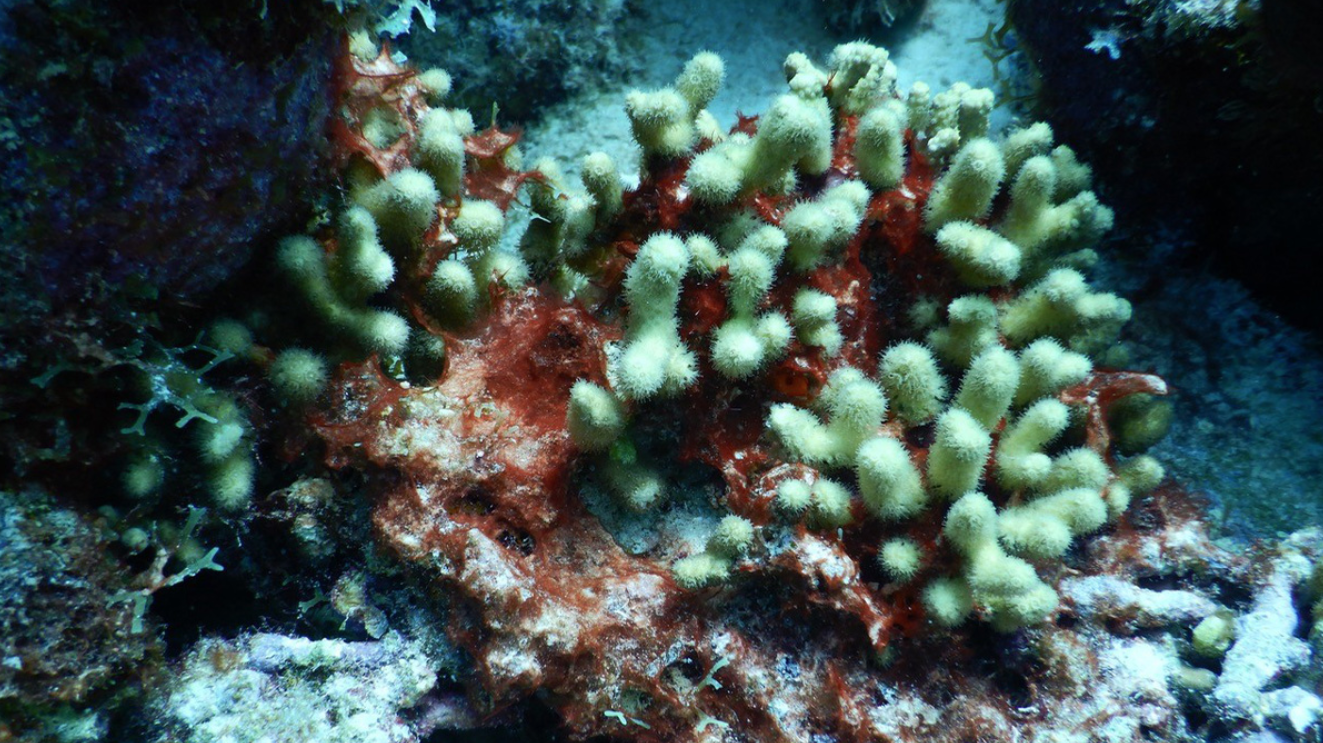A paper published in the Ecological Society of America has linked the prevalence of Cyanobacteria to coral disease in the Caribbean. A team of biologists noted that cyanobacteria mats were not only a sign of reefs degraded by nutrients and high temperatures in Bonaire, the cyanobacteria itself then provided favorable conditions for Black Band Disease, (BBD,) in corals.
Cyanobacteria is harmful to corals with direct contact slowing growth and causing localized tissue mortality. It can facilitate allelopathic impacts on the growth and photochemical efficiency of coral zooxanthellae and may promote pathogenic (disease-causing,) bacteria, through the release of dissolved organic carbon and bioavailable nitrogen. Poor water causes cyano, cyano promotes BBD and the whole thing spreads, with Montastraea cavernosa and Colpophyllia natans being particularly affected.
Corallivorous fish are also thought to spread both cyano and BBD, by preying on one infected patch of corals before moving to another, the cyano passing through the fish’s gut. Since its discovery in 1976 Black Band Disease has spread globally. Like cyanobacteria, it too forms dark-colored microbial mats and itself becomes refugia for cyano, sulfur reducing bacteria, and heterotrophs. So BBD promotes cyano and cyano promotes BBD, and the only way its spread is going to be prevented is through improved health of the reefs via fewer nutrients, and lower temperatures. It also highlights the risks that any cyanobacteria pose to aquarium corals. Cyanobacteria thrive in poor water conditions, and can directly affect corals yet also indirectly affect them through being vectors for pathogenic bacteria.
The paper highlighted too, the negative effects that macroalgae may have when growing next to corals, again boosted in number by deteriorating conditions on the reefs. “Contact with the alga Halimeda opuntia though itself not directly tied to the etiology of any known coral disease induces microbiome changes, and triggers white plague type II in the coral Montastraea faveolata,” the paper adds. The research was carried out by Ethan C. Cissell, Caren E. Eckrich and Sophie J. McCoy. The image shows a benthic cyanobacterial mat overgrowing live coral on an otherwise healthy reef in Bonaire, Netherlands. (Photo by Ethan Cissell.)



